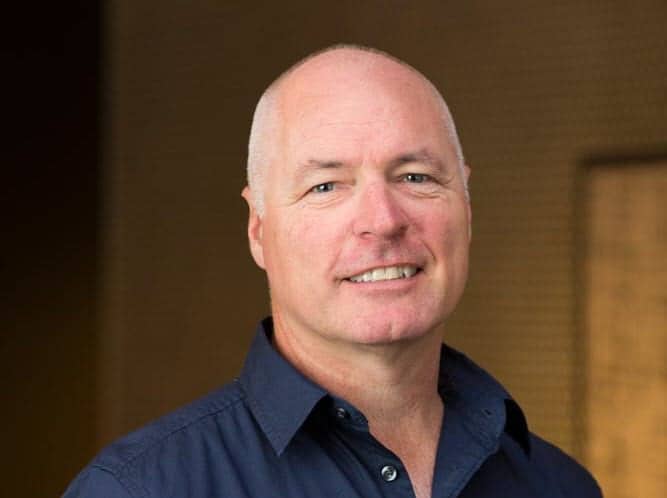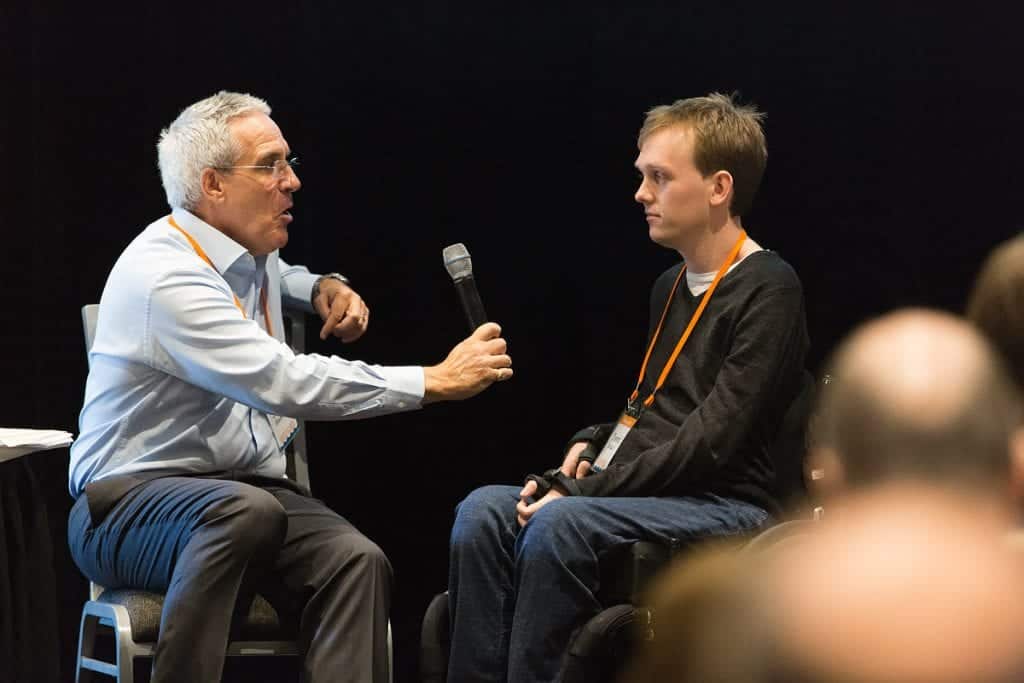
Trading Strategies: Nick Radge interview with Quant News
Nick Radge is renowned for his trading strategies and methods. Nick has been trading and investing since 1985, and has worked for global investment banks in Sydney, London and Singapore. An ex-Associate Director at Macquarie Bank and ran his own hedge fund. He was previously the Vice President of the Australian Technical Analysis Association. He is also the author Unholy Grails – A New Road to Wealth as well as the founder of The Chartist, an online advisory and research website designed for Australian traders and investors.
Nick provides extensive personal consulting on trading and investment plans, computer modeling, technical analysis and other areas required by Australian and international clients. Today he resides in Noosa, Queensland, Australia with his family and actively trades stocks.
Grace: Tell us about your business, The Chartist.
Nick: We actually run two businesses. The Chartist has been in business since 1998 and it originally started to provide a technical analysis research service. I used to work for one of the big institutions in Australia and it had 44 fundamental analysts and no technical analyst and there was a considerable interest in technical analysis at the time.
So my wife Trish and I decided to launch a business that would provide in depth technical analysis that many investors can use alongside their fundamental analysis. We know fundamentals are great for showing what the driver is over the longer term for share prices and that kind of stuff but in terms of a timing tool it can be a little bit slow. The addition of a technical overlay greatly enhances the timing side of using fundamental analysis.
So that’s where it started. I come from a systematic trading background. In fact, all the strategies that I trade are 100% systematic and not technical analysis based so it was a natural progression for the business to also start moving in that direction as well. So The Chartist business offers technical analysis research and also a number of algorithmic trading strategies both trend following and mean reverting across the Australia and U.S. markets.
We’ve also recently launched a newsletter in the U.S. market which is called Trade Long Term. It is a 100% momentum based strategy on the S&P500 stocks and that’s an aggressive strategy that I trade. We encompass a couple of different areas but it’s all technical analysis based.
The Chartist business offers technical analysis research and also a number of algorithmic trading strategies both trend following and mean reverting across the Australia and U.S. markets.
Liza: You offer chart research on FX majors. Can you tell us more about your most used tools for FX analysis?
Nick: Our core tool is a combination of Elliott Wave analysis and traditional technical analysis such as volume. Really the key driver behind our analysis is Elliott wave, which is not for everybody. I think you find that people who understand it and know how to use it properly will gain a huge amount of insight from it. I personally believe, from a discretionary perspective; Elliott wave is definitely the best way to look at trends and turning points and validation points and we take it quite systematically.
We don’t look at EW in a pure sense, we look at it from a trading perspective. It’s a tool to help us make decisions and therefore provides setups which then need to be triggered. It gives us a specific validation or an invalidation point of a lot of a particular trends and we find that extremely useful. We also use classic technical analysis alongside EW. If you get complements between Elliott wave and some classical charting patterns, that gives you greater confidence to take the trade.
Liza: I saw you had written an article about trading with divergence. Can you tell us a bit more about this method of using indicators?
Nick: Sure. Divergence to me is a very powerful signal. We use an adjustment to a classic stochastic indicator to determine divergence and we will only trade what’s called a type A divergence. So a type A divergence would be, for example, a low point, a bounce and then a secondary low in price but the indicator is not giving you a second reload. That would be a type A bullish divergence because it’s like a rubber band and it can be an exceptionally powerful setup.
In fact, to give you a good idea, I’ll go back to March 2009 at the low of the GFC, we actually pulled the lows based on a bullish divergence and an Elliott wave count on the weekly chart. We were about two days out on calling that absolute low and it was based on a divergence. I think if I had to have only one strategy in my technical analysis toolbox it would be trading divergence. I think it’s an extremely powerful method not only in outright trades but it’s also very useful for option traders as well.
For example, if you see a bullish divergence in a share price then you can sell some put spreads below because the chances of the share price continuing to fall is very low. Conversely, if you have bearish divergence in an uptrend, selling call spreads as an example, is a very good strategy. It’s a potent set up and it’s also very adaptable whether you want to trade options, outright shares, FX or any other instruments. It occurs on any time frame as well so you get it on ten minute charts or on daily charts, or on weekly charts, it’s all one in the same and it a good little set up.
Liza: Can you talk about how you use volume in your analysis?
Nick: Volume is very important as far as we’re concerned especially at certain turning points in the market where you get some confluence with price patterns. Volume really is the driving force behind share prices. Volume is like the fuel that’s driving the car and you use it in conjunction with the closing price of the particular stock or equity index or whatever you’re tracking.
For example, if you see a rise in a share price and volume is very light, a lot of people see that as a bearish trade. The classical way of thinking is that you need buy demand to be pushing up the share price and if there is not a great deal of volume the argument is that there is no buy demand but my argument is there’s actually no sellers so it doesn’t take buyers a great deal of energy to actually push the share prices up. You can actually see when buyers and sellers are coming into the market.
“Volume is like the fuel that’s driving the car…”
Grace: What are some of the most important steps for creating a robust mean reversion strategy?
Nick: That’s a very good question and there are two very important facets. First, you need to have a mean reversion system that works across a large number of instruments.
For example, mean reversion systems that I personally trade run across the Russell1000 universe so it’s the same set of rules for every single stock in the Russell1000. I am not a believer in developing a system for any individual stock. I have learned that over time the personalities of individual instruments change. Also when you have a system, whether it be a mean reversion system or another type of system, that’s trading on one instrument usually it’s being fitted or optimized just for that individual symbol and chances are that it will discontinue working in the future.
If you can have a system that produces very good results over a very large amount of individual symbols then you’re on to something that’s probably significantly more robust and more likely to continue to work in the future. That’s the way I go about creating robustness.
However, one of the problems with using a large universe is what we call selection bias. Selection bias is when you have too many signals and not enough cash to implement them.
So let’s say, for example, you have a mean reversion system and you’re allowed to take twenty buy trades on any given day. Well if there are thirty possible buy trades, you need to be able to determine which twenty you’re going to take. If you can’t determine that there’s going to be a discrepancy between your real time trading and your historical testing. The more often you have that selection bias discrepancy the more likely your results are going to deviate from your backtest results. That’s something that you don’t want.
Whilst that’s very difficult to control with a large universe you do get it occasionally and the less you get it the better off you are. As a rule of thumb, we would only want one day of the year where there is a selection bias problem and that would suggest to us that the other 299 trading days of the year you’re going to replicate backtest results exactly.
“…you need to have a mean reversion system that works across a large number of instruments.”
Grace: How do you know when you have a successful strategy? And how do you know when it’s run its course?
Nick: I’m a big believer in understanding why your system should make money; that’s the starting point. Obviously your starting point is a hypothesis on what the system is actually trying to do and why it should work. If you can’t explain why your system makes money then the chances are when you go into draw down you’re not going to be able to stick with it.
For example, a trend following or a momentum style system works in a particular market environment. Specifically it works when there are trends, if there are no trends then the system is not going to work. It doesn’t mean it’s broken in any way shape or form but you just know and you can explain why it’s not making money if the market is moving sideways. For the long term, we know equity prices tend to trend up and we also know it’s impossible for trends not to exist.
Trends must exist over the longer term and we can go back a hundred years and see trends in every instrument around the world. The reason why trends exist is because first of all human psychology or market sentiment tends to drive share prices in different directions and never can you fully price a share based on a valuation. As a result, share prices have to trend and if you can capture those trends over the longer term, it’s very easy to create a positive expectancy.
If you have a system that you don’t really understand why it’s generating a profit and doesn’t have a great deal of sample, I think you’re going to struggle to continue to trade that and know when it’s actually broken.
For example, let’s say you have a system that buys the S&P500 on a Wednesday only when gold is up on the Tuesday and Monday was a down day in the S&P500. There’s no logic behind why that would work. If you do find something like that works, it’s probably random rather than an edge in the market.
So when my trend following systems go through a difficult period of time, I look at the market and I can understand the market’s going sideways or the market’s heading down and my long only trend following strategies will obviously give money back in those periods of time. That’s fine; that’s part and parcel of traveling the journey of trend following and because if I understand that and I can see it in the market then I am more likely to stay with the strategy over the longer term.
Liza: Can you tell us a little bit about your risk management system that you use?
Nick: Risk management is very important. We do things reasonably simply in that many of our trend following strategies run diversified portfolios and we allocate a certain percentage of capital to different positions. For example, for our main trend following portfolios we will allocate 5% of our capital to 20 separate positions. We have specific exit criteria and over the longer term our average loss is about .8 of 1%, so very small amount of money when we have a losing trade. Even my most aggressive strategy that I trade the average loss of capital on a losing trade is 1.3% so also very small.
Obviously winning trades are two and three times the size of that which is what gives us our edge. So with risk management, there’s various ways to do it, obviously the fixed fractional position sizing, a lot of people do the old 2% rule. And that’s really what it comes down to at the end of the day; risking and losing a very small amount of your money when your trade goes against you and that way when you have a streak of losing trades you are able to survive the longer term.
Grace: What’s your top advice for algo traders or systematic trader in the industry?
Nick: The top advice is to continue to research make sure that you’re testing properly. One of the things that we do, quite possibly differently to the majority of people out there, is we do everything we can to break a system. We try to invalidate it, punch holes in it, and find mistakes. Rather than trying to find the optimal system we try to break a system.
If you do everything you can to break a system and it’s still generating a profit then you’re probably on to something that’s reasonably robust and most likely going to continue into the future. We increase signal variance, we vary the data that goes into the system, we do bootstrapping and Monte Carlo system testing and those kind of things to really look inside the system and see what it’s doing. I think if you can do that and still comes out with reasonably good results then you’re on to something good.

